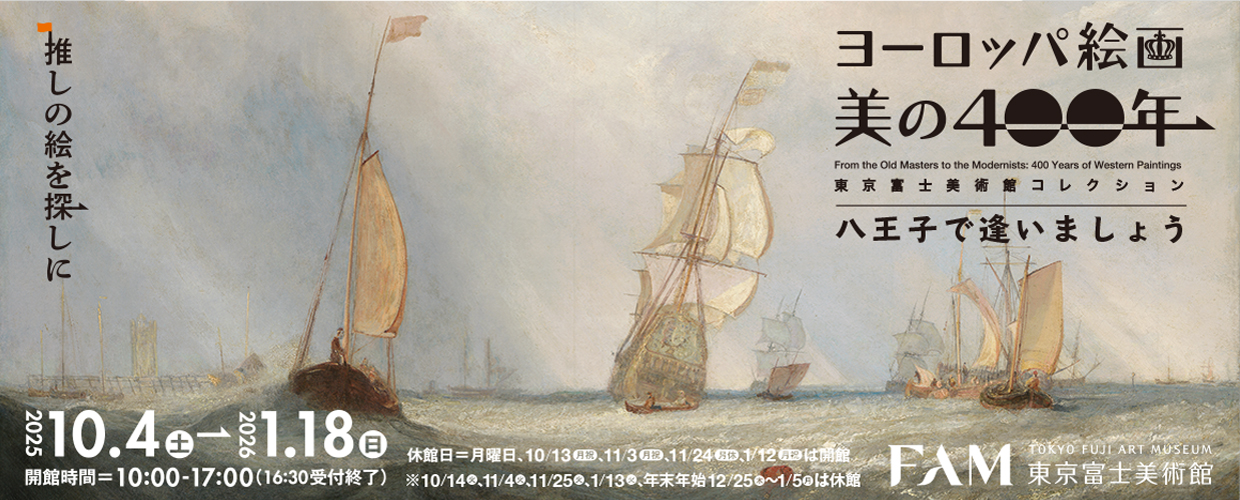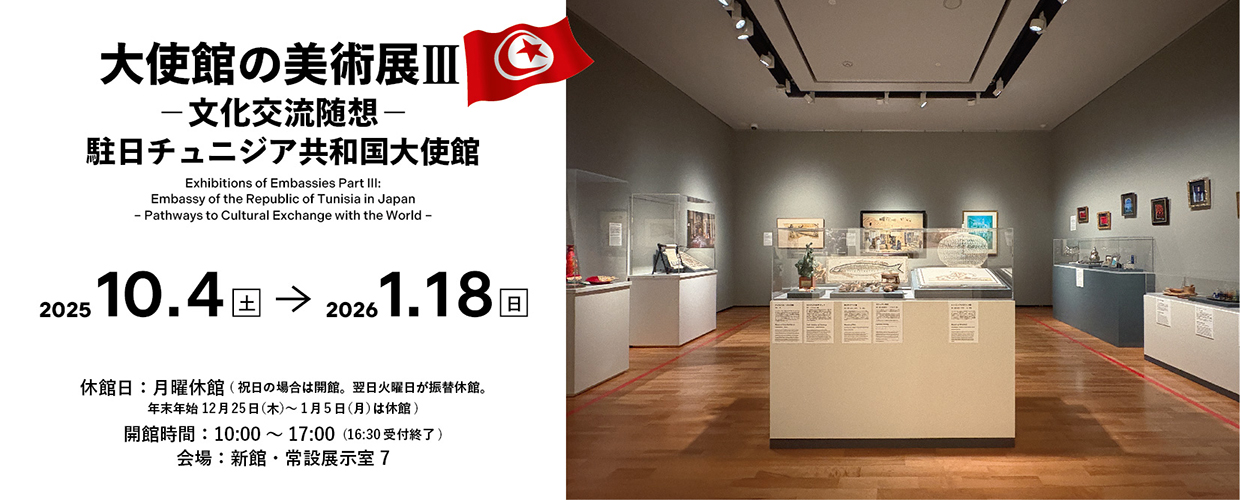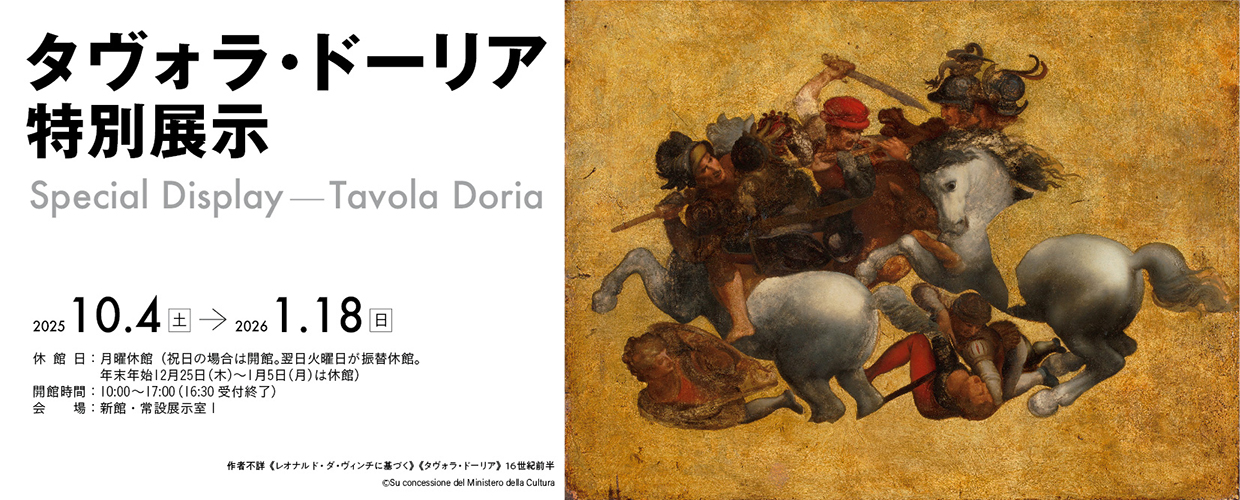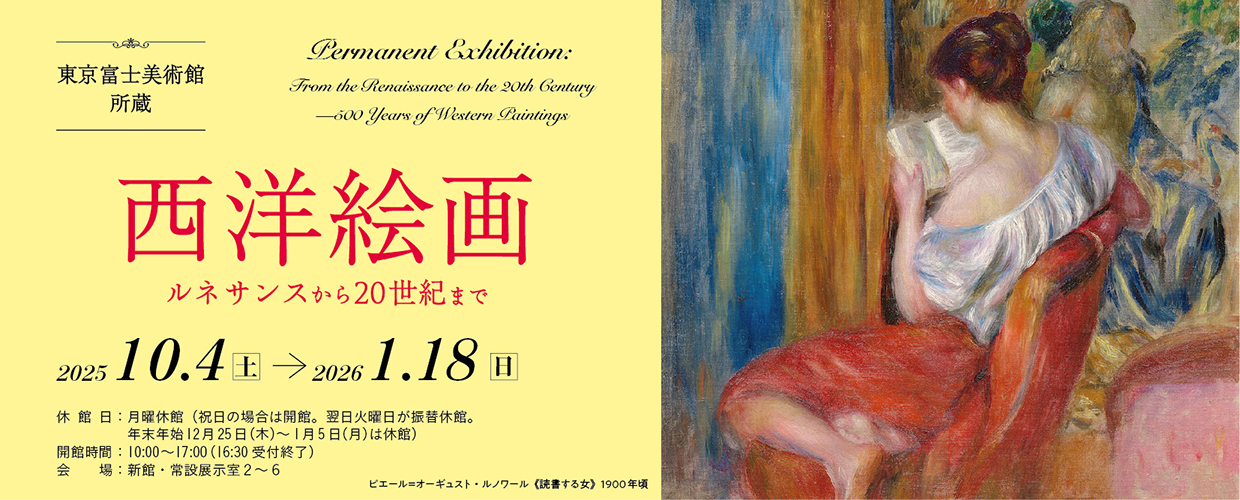c. 1810/Oil on canvas
73.5 x 60.5 cm
Permanent Exhibition: From the Renaissance to the 20th Century – 500 Years of Western Paintings
Exhibition period:Saturday October 4~Sunday January 18, 2026
Permanent Exhibition Gallery 3 in the New Wingof Tokyo Fuji Art Museum
SUMMARY
Having been passionately keen on horse and painting since childhood, Géricault graduated from the Lycée Impérial in Paris in 1808, and then became a pupil of Carle Vernet, who was then gaining popularity for the paintings of graceful horses and of officers and soldiers of the Napoleon’s army. Two years later, in 1810, Géricault entered the studio of Pierre-Narcisse Guérin, started to take professional trainings. Besides Géricault, the Guérin’s studio produced some important Romantic painters including Eugène Delacroix and Léon Cogniet. Géricault, however, left the studio due to that he could not adapt himself to his mentor’s strict disciplines of neoclassicism, and soon afterward, he started to devote himself to copying various great works by great masters of the past in the Louvre. Named as "Napoleon Museum" at the time, the Louvre became a treasury of famous paintings, thanks to the spoils of war that the emperor seized from all over Europe. Copying a number of great works of the predecessors was the best practical education for young Géricault. His self-trainings came to fruition when Géricault made a brilliant debut at the tender age of 21: His painting An Officer of the Imperial Guard Charging (Louvre Museum) was selected for the 1812 Salon, winning the gold medal. Even after achieving such a great success, he continued to dedicate himself to further study. He went to the royal stables in Versailles to draw various postures of horses with tireless and deliberate observation. And also, his sketchbooks were filled with the drawings themed on military. One can say that despite his short life of only 33 years, Géricault could have left his name as a great master who embodied the essence of Romanticism. That may be because of the results of his intensive trainings during his young ages. This work can be regarded as one of his study-like paintings that were made at the age of around 20, when he started his painting career. In his oeuvre, finished large works are very few, but rather, there are many more study-like small works which attempted to pursue the same theme from various angles. This painting could probably be one of his representations developed under a certain concept that was themed on a valiant equestrian image. His attitude of trying to realistically represent strong feelings and strained movements is a very representation characteristic to the Romanticism. While Géricault was painting the general of Napoleon’s army, Napoleon himself was spending rapidly changing days both publicly and privately, such as the victory over the Battle of Wagram, divorce with Josephine, marriage with Marie-Louise, Russian campaign and retreat from Moscow. Meanwhile, in the art world, the Neoclassical and Romantic schools were competing in beauty with each other, creating a number of exquisite masterpieces such as Ingres’s The Valpinçon Bather, David’s The Distribution of the Eagle Standards, Gros’s Napoleon on the Battlefield of Eylau, Girodet’s The Entombment of Atala, and Goya’s Disasters of War. Like surging waves, the art world was definitely rushing toward an era of Romanticism. It was 15 years later in 1824 that Eugène Delacroix, a standard-bearer of Romanticism after Géricault, exhibited Massacre at Chios at the 1824 Salon, which brought victory to Romanticism at the Salon.
ARTIST
Théodore Géricault
1791-1824
List of artworks by the same artist
INFORMATION
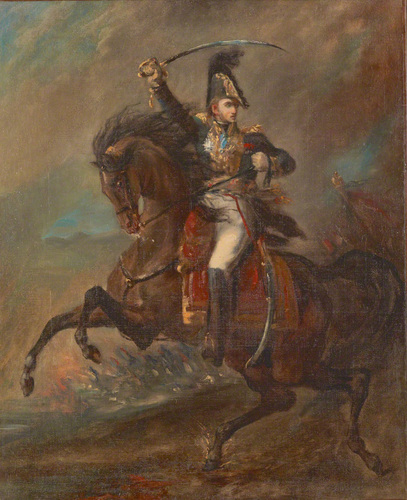
Tuesday, May 26 - Sunday, August 16, 2020
Through the Eyes of René Huyghe: The Splendor of French Paintings — Formation and Transformation of the “Grande Manière” Osaka City Museum of Fine Arts (Osaka, Japan)
Tuesday, February 4 - Sunday, March 29, 2020
Through the Eyes of René Huyghe: The Splendor of French Paintings — Formation and Transformation of the “Grande Manière” Kyushu National Museum (Fukuoka, Japan)
Saturday, January 12 - Saturday, May 4, 2019
500 Years of Western Paintings: Collection of Tokyo Fuji Art Museum Shanghai PowerLong Museum (Shanghai, China)
Tuesday, October 23 - Sunday, December 23, 2018
500 Years of Western Paintings: Collection of Tokyo Fuji Art Museum Tsinghua University Art Museum (Beijing, China)
Sunday, September 20 - Sunday, October 25, 2015
The 70th Anniversary of the Atomic Bombings on Hiroshima and Nagasaki: War and Peace Nagasaki Prefectual Art Museum (Nagasaki, Japan)
Saturday, July 25 - Sunday, September 13, 2015
The 70th Anniversary of the Atomic Bombings on Hiroshima and Nagasaki: War and Peace Hiroshima Prefectural Art Museum (Hiroshima, Japan)
Friday, August 1 - Sunday, August 31, 2003
A Great Masters of Impressionist and Modern Arts Iwate Prefectural Hall (Iwate, Japan)
Thursday, January 2 - Sunday, January 26, 2003
Great Masters of Modern Japanese Oil Paintings Saga Prefectural Art Museum (Saga, Japan)
Friday, November 8 - Sunday, November 24, 2002
Great Masters of Modern Paintings Nagasaki Prefectural Museum (Nagasaki, Japan)
Saturday, September 7 - Sunday, September 29, 2002
Four Centuries of Occidental Paintings from the Tokyo Fuji Art Museum Collection SOGO Museum of Art (Kanagawa, Japan)
Friday, June 7 - Sunday, June 23, 2002
Modern Western Oils and Engravings from the Tokyo Fuji Art Museum Collection Fukui City Art Museum (Fukui, Japan)
Saturday, May 11 - Sunday, June 2, 2002
Modern Western Painting Kagoshima Prefectural Museum of Culture Reimeikan (Kagoshima, Japan)
Saturday, April 13 - Monday, May 6, 2002
Modern Western Oils and Engravings from the Tokyo Fuji Art Museum Collection The Urasoe Art Museum (Okinawa, Japan)
Tuesday, October 14 - Sunday, November 30, 1997
Masterpieces of Western Oil Painting from the TFAM Collection Hong Kong Museum of Art (Hong Kong, China)
Friday, October 16 - Thursday, November 5, 1992
Masterpieces of European Oil Painting: The Paintings in 20th Century from the Renaissance to Impressionism China Art Gallery (Beijing, China)
Exhibited: Johannesburg, Art Gallery, Three Centuries of French Painting: François I-Napoleon 1, March-April 1974, no number. Illustrated. Exhibition traveled to Cape Town, South African National Gallery, April-May 1974. Caracas, Museo de Bellas Artes, Cinco siglos de arte francés, May 24-June 24, 1977, no.34. Illustrated New York, Wildenstein, Consulat,, Empire, Restauration: Art in Early ⅩⅨ Century France (cat. by G.Bernier), April 21-May 28, 1982, pp.103-104, no number. Illustrated p.80 (color)
EXPLORE

You can search and browse content on a platform across museums and archival institutions nationwide, and create My Gallery (online exhibition).
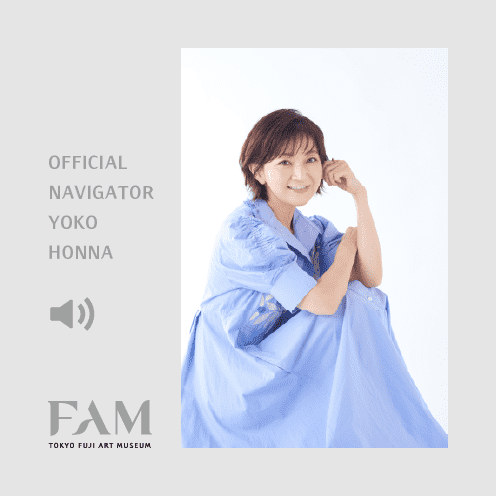
The Official Navigator of the Tokyo Fuji Art Museum is voice-over artist, actress and vocalist Yoko Honna. She narrates the Japanese-language presentation and audio guidance segments of the works of Western paintings on display at our New Wing Permanent Gallery.

